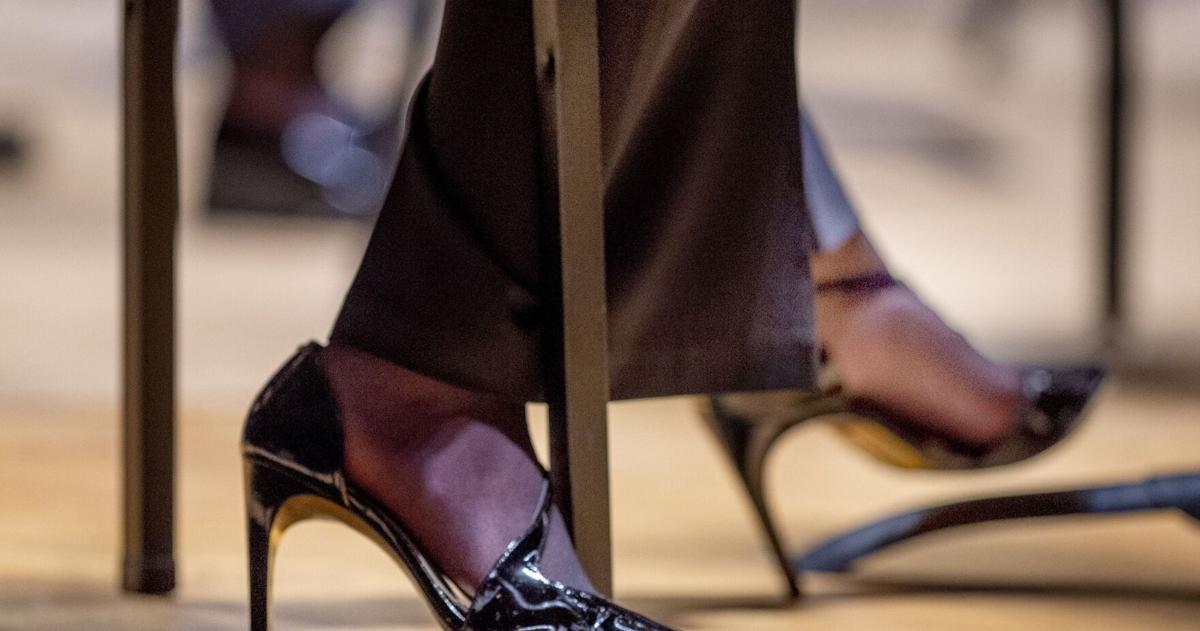JO CONSTANTZ Bloomberg News
For women working in white-collar industries like law and finance, wearing high heels was taken for granted as part of what it meant to go to work, like an hour-long commute or a $15 office salad. Now many of them are wondering if it’s worth having a sore foot.
Podiatrists are seeing an increase in injuries from returning to the office, in-person conferences, and other professional events that require more formal footwear. Dr. Miguel Cunha of Gotham Footcare in Manhattan said his offices have recently seen an influx of overuse injuries, from shin splints to plantar fasciitis, in patients wearing heels again after giving them up for two years. During the pandemic, lower activity levels and going barefoot have led to weakness and tightness in muscles and tendons.
“Once pandemic restrictions were lifted, many women went back to using heels for work without giving their bodies enough time to return to their pre-pandemic activity levels,” Dr. Cunha said. For many, this leads to increased foot pain and discomfort.
People also read…
“The body doesn’t like any type of abrupt change,” said Dr. James Hanna, former president of the New York State Podiatric Medical Association. “Whenever you have to do something at the same time, suddenly you go back to the office, and now you’re wearing these shoes that you haven’t worn in two years, it’s really like asking for trouble.”
Jessica Cadmus, personal shopper and stylist for Wall Street executives, said her clients have gone from wearing heels every day to only once a week, or only for important meetings. During the pandemic, Alice Sofield mostly wore sneakers while working from home. But after a major industry conference in June, she said after four days in high heels her feet hurt so much she couldn’t even stand up. She had to receive cortisone injections in her heels to relieve the pain.
As the commitment to heels falls by the wayside, more casual workwear has emerged, including white sneakers. “The shift has been towards a more relaxed overall aesthetic across the board on Wall Street,” Cadmus said. “The sleek white sneaker is fashionable for both men and women.” It’s a look that works when paired with more formal pieces, which clients are hesitant to wear now that office aesthetics have relaxed, she said.
Sofield has noticed this trend, but still feels like she has to adhere to some standard of professionalism when it comes to footwear for in-person meetings. “When I met my clients at the big industry meeting, they were all wearing sneakers,” she said. “I can’t, because they are our customers, so I have to look good.”
The data, however, suggests that women are buying high heels again, but not for work. According to a July report by market research firm NPD Group, high heels are gaining market share over low heels as women buy shoes for special occasions. “Dress shoe sales are also shifting from pumps — a more conservative, work-oriented style — to open-toed sandals, which are more occasion-oriented,” said NPD analyst Beth Goldstein.
Whether for work or play, wearing heels after a long break puts you at risk of rocking a much less fashionable shoe: a medical boot. “Heels are going to make you less stable, more likely to have lateral ankle sprains and other types of issues,” especially if you lack practice, Dr. Hanna said.
Nearly two months after the conference, Sofield said her feet still hurt when she woke up in the morning. As she prepares for another visit to the doctor to see if she needs another round of cortisone shots, she said she won’t be going back to the closet full of three-inch pumps she wore before the pandemic. “I have a bunch going to Goodwill,” she said. “Like, what’s the point?”

